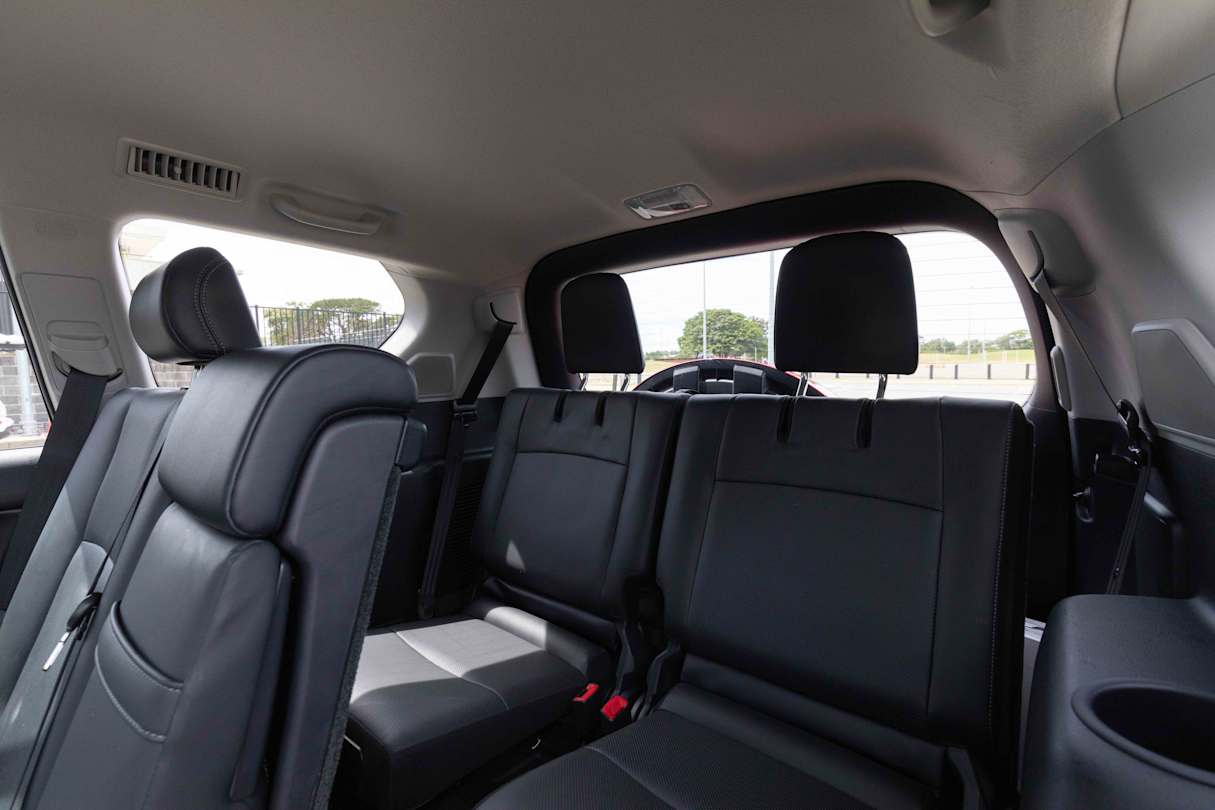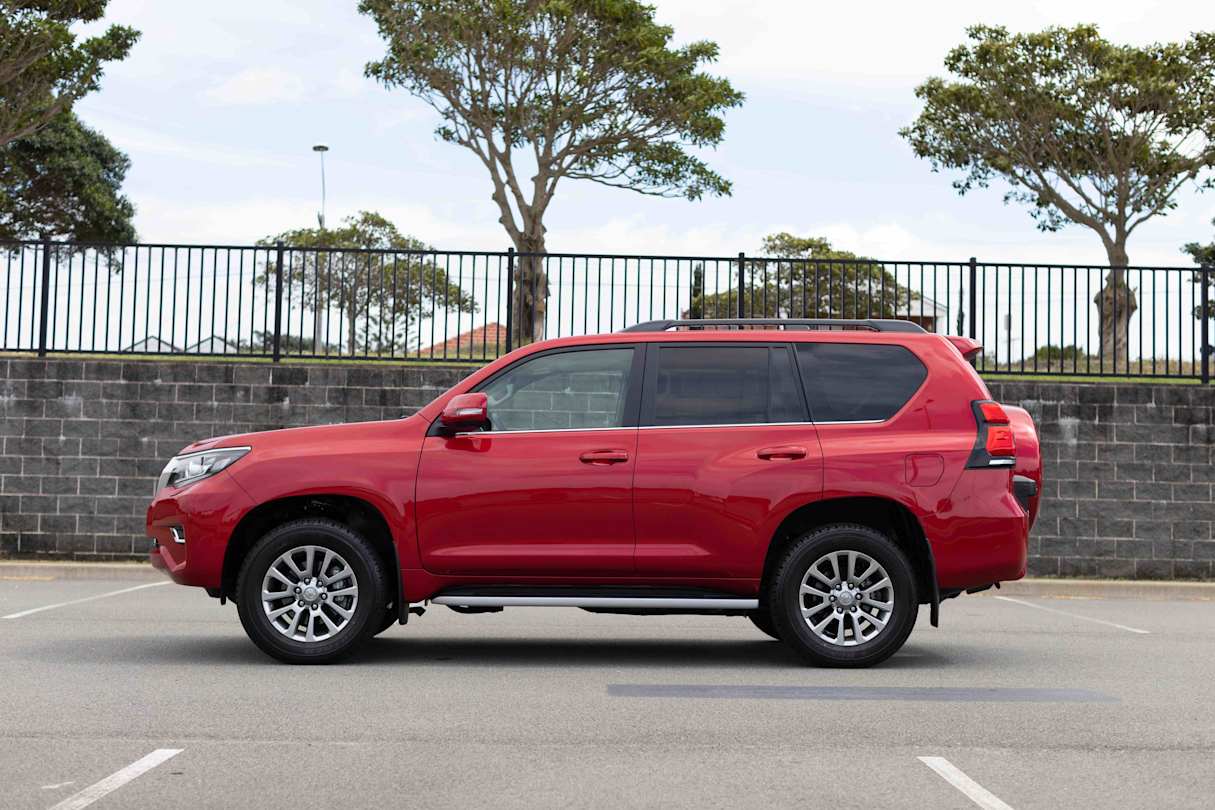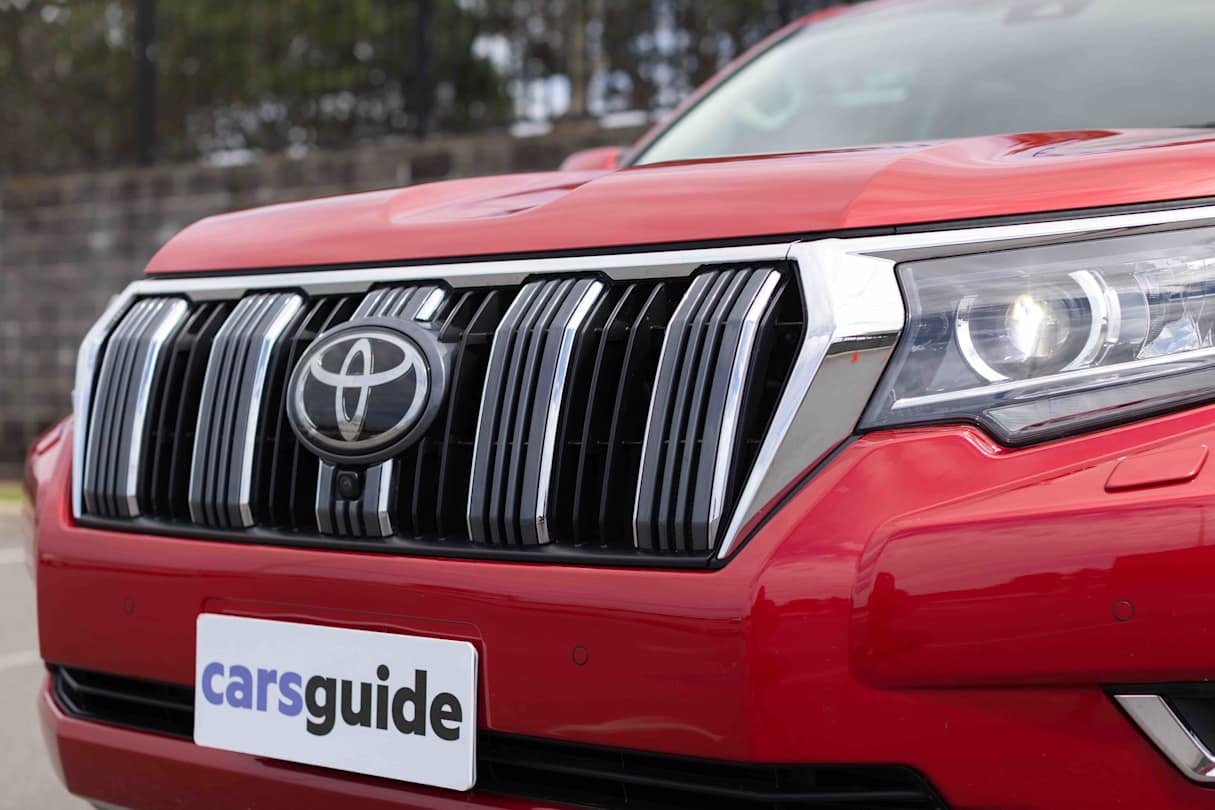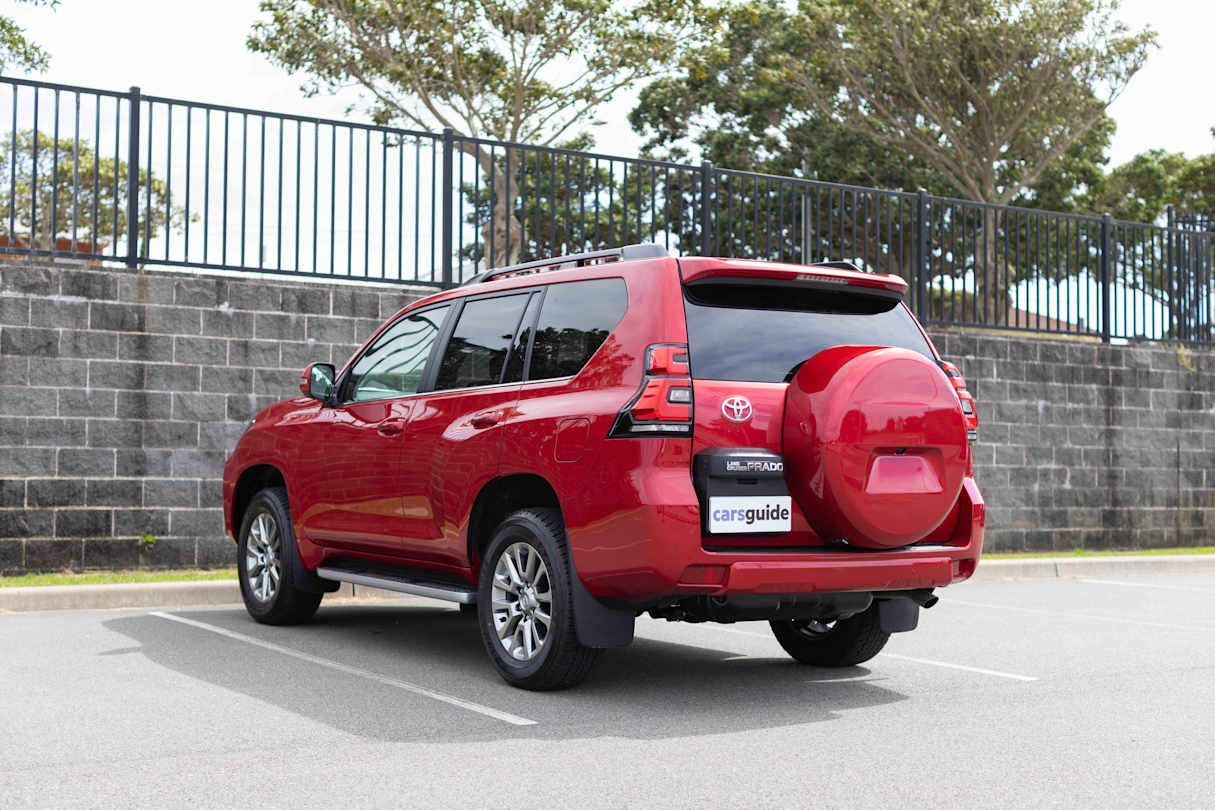So you’re getting a large seven-seat SUV and Toyota is clearly high on your look list. But should you get the new Kluger or the LandCruiser Prado? What’s the difference? Do you need a proper 4WD Prado? And how will you fare with a hybrid Kluger?
All your questions and more are about to be answered as we compare two very different takes on the Toyota 7-seater SUV. This test pits Kluger vs Prado as I’ve already test driven both of these cars for seven days - I actually went on a very long road trip in the Prado, where the Kluger was with me at home in the burbs - and we are about to go into which car will suit you better.
For reference, the Kluger is the top of the range Hybrid Grande variant and costs $75,400 (MSRP), while the top of the range Prado Kakadu costs $86,907 (MSRP). So, the seven-seat SUV with the iconic "LandCruiser" moniker as part of its name costs a good $12,000 more. Is it worth it? Let’s find out.
How do they look?
These cars do look quite different. The Kluger has had a proper makeover for its new-generation model so looks more modern than the Prado which has a very macho 4WD design.
The Kluger has been given the RAV4 treatment and in fact, it looks like a larger RAV4. It’s got the same raw angles as a new RAV4, is still quite rectangular but does have some fancy new styling like the front grille and the shape of the back windows.
Inside, because this is the top of the range, it looks quite luxe, particularly in the cream leather upholstery. It feels much more premium than the last Kluger I was in - back in 2017.
The front seats are heated and ventilated, there’s a leather steering wheel, the centre console is nicely designed and though it does lack the gloss of its rivals, it still looks good for a Toyota. The media screen - 8.0-inch in size - doesn't look as big as it should be for a modern SUV, especially a brand-new one.

You get some soft touch surfaces with external stitching and a large moonroof in this model, and it feels good to be in this car.
The exterior of the Prado really explains its purpose. It’s a muscled up hunk of machinery that you really can take anywhere. Kind of like the car version of Channing Tatum, but a little less good looking. It positively screams strength and still sports a square-ish shape that actually suits this car.
As this is the top spec it looks much more luxe than you’d expect for a large 4WD. There are leather accented seats that are power adjustable as well as heated and ventilated up front, and a premium, part-wood-trimmed steering wheel that I can attest is comfortable even when driving for hours.
There’s a modern centre console area with buttons that make sense and are not confusing, and everything is within hands reach. Most importantly the multimedia screen is now a good 9.0-inch size and is nicely integrated into the dash which looks fab.

As far as design goes, the Kluger scores higher with its revamped exterior and more modern interior. The Prado essentially looks like a Prado always has, so design wise, the Kluger comes out on top.
What’s the tech like?
Both cars have been upgraded to include Apple CarPlay and Android Auto so you can instantly sync up to Google maps and Spotify for easy tech on the road via smartphone mirroring.

The design on both cars is still the old Toyota design though - even on the Kluger which has a newly designed interior - so it’s quite messy and busy compared to the more streamlined modern designs you’ll see on some competitors and both feel dated.

The multimedia system on the Kluger is 8.0-inches and on the Prado it's 9.0-inches, so they're both very close and this technology is not what will be the deciding factor between the two cars as it's a tie for this round.
How spacious are they?
Onto interior space which is an important factor when buying large cars, because it's most likely the main reason you’re looking at them.
There is loads of space in the Kluger - up front has plenty of leg and headroom, even for taller people and even with the sunroof.

Rear passengers will be comfortable, my two children aged 7 and 9 were happy to climb in and when we gave a few kids a lift, they happily sat in the third row. I’m 161cm (5'3") and have enough space in front of my knees and the seat ahead that taller adults and teenagers will also have a good journey.
Into the third row and the space shrinks, which is fairly standard for this category. I can still fit and taller adults will find enough leg and head space also.

The boot is large for this category. With all seats in use, you’ll get 241L (VDA) which will let you transport a suitcase on its side, school bags or grocery bags. With that row down, the boot opens up to 552L (VDA) and you’ll fit a double pram in there, it’s enough room for sporting equipment and plenty of room to go on a driving holiday with it.
In the Prado, the front is very spacious. There’s enough leg and head room to sit for hours on end even for tall people and it's quite breezy inside the cabin.

My children had loads of room in the back, they fit comfortably with a large backpack each that housed their entertainment for the road and a pillow across the middle armrest for sleeping.

The back row is spacious as far as third rows go, and you can move the middle row forward to give the back more leg room if you need it. With the third row in use there is 140L (VDA) of space which is enough for some grocery bags or school bags. With the third row down you’ll also get a double pram in, and I used it with the rear seats folded to fit in 2 weeks worth of gear, including a number of suitcases, an esky, beach bags, inflatables and more. In this configuration the cargo volume is 553L (VDA), so there's really nothing in it if you're using either of these as a five-seater.
But with seven seats up the Prado’s boot is smaller, and you also have the awkward side-swing tailgate to contend with, so the Kluger edges out the Prado in this category.
How easy are they to use every day?
The Kluger's storage comprises two cupholders in the front, a large centre storage bin, bottle holders in each door, a spot for keys and a phone but there is no wireless charger. Second-row passengers get two cupholders in the centre armrest and their own climate control. In the third row there are four cupholders, a small storage spot and directional air vents.
The front seats are power operated, there’s keyless entry that actually works before you go to open the driver’s door which is more than some luxury cars can say, and there’s a power operated tailgate.
In the Prado there are two cupholders in the front and a small slot to hold your phone, plus a large cooled centre storage bin that we found extremely useful as we were travelling for a while and snacks for the kids could be kept cold on the road. Plus there are bottle holders in each door.
One area the Prado is lacking is the number of USB ports. There’s one in the front … and that’s it. In this whole car. So we had to take turns charging phones and when the iPads went down, they went down and that was that. I think they could definitely do with a few more charging ports - the Kluger, for context, has two up front and another two in the second row.
In the third row of the Prado you’ll find directional air vents and a cupholder.
The Kluger wins again, purely on ease of use of power operated features because they are newer than the Prado's.
How do they drive?
This is where they differ the most. The Kluger, this model anyway, has a 2.5-litre petrol-electric hybrid motor, while Prado Kakadu has a 2.8-litre turbo-diesel engine. The Kluger is AWD, the Prado is AWD.
It had been a few years since I'd driven a Kluger but the one takeaway I had from that was that it was heavy to drive around. And the hybrid motor on this new version has taken that heaviness away. It’s almost quick off the mark, which for a large car is saying something, and it feels much lighter to drive around.
It also makes it feel smoother and more nimble on the road. The Kluger Grande Hybrid is AWD (all the Kluger Hybrid models are) which gives you more traction on unstable road surfaces. It gets up hills quickly, overtakes easily on highways and generally feels great to drive.

Even parking isn’t really an issue considering the size. The steering wheel turns easily and you can navigate into parks quite well using the reverse parking camera with 360-degree view on this spec.
The Prado was driven mostly on highways as I drove from Sydney to Byron and back in it, and driving on the open road is a lot different to driving around suburbia. It handled both quite well, but was not as smooth as the Kluger. The 2.8L turbo-diesel engine was upgraded with a bit more oomph in 2021 and it has good power and torque so you can get up hills easily and has enough kick to overtake when you need to on highways.
I found it travelled best in Sport S+ mode. It was a lot smoother in this mode when going high speeds on long roads, and without it it felt a little less sure of itself. So if you’re doing things like going to work or on the school run stick to eco mode, but if you’re on a long journey, indulge in Sport S+ - I think it uses more fuel but it’s worth it.

It’s a 4WD so it has better traction on loose surfaces and there’s more info on this in Crafty's Adventure Review.
I do think it handles like a big car - it’s not very agile and the steering is not super precise. It feels heavy on the take-off, too; you can feel the bulk of the car as soon as you get behind the wheel.
You get used to this the more you drive it but you always feel it when parking. Leave enough room and you’ll get in the park fine, but it has a very low-res reverse parking camera that blacks out some areas for some strange reason, and it has a 360-degree surround view but it’s all quite blurry. If I was going to request improvements, this would be near the top of my list.
So for me, the Kluger wins on driving, hands down. The hybrid powertrain makes it light and easy to drive, while the Prado is still stuck in heavy 4WD territory. It didn’t fill me with confidence while on the highway either, though it most likely shines when you’re actually doing the four-wheel-driving it was built for.
So if you’re not planning to cross rivers and go up muddy tracks on a regular basis, I would say the Kluger is what you’re after because it’s still AWD, which is what you need for steady traction on unstable surfaces. Its not hardcore like the Prado. It’s really up to how you’re going to drive the car.
How safe are they?
How safe are these two family SUVs? And are they very different?
Safety is comprehensive in the Kluger Grande. You’ll get auto emergency braking (AEB) with pedestrian and cyclist detection, blind-spot monitoring, lane keep assist, rear cross-traffic alert and adaptive cruise control.
The main thing I look out for in a family car though, are airbags, because you can have all the fancy tech you want but when it comes down to it, are they going to protect your child? And the Kluger doesn’t have curtain airbags that extend to cover the entire third row, so while this is a fantastic five-seater family SUV, I wouldn’t want to use the extra two seats full time. Think of them as bonus seats for when you need them.
It’s got two ISOFIX points and three top tether points in the second row for kids car seats. No child-seat anchors in the third row, though.
The Prado Kakadu has similar safety, with things like lane departure alert, adaptive cruise control, AEB, blind-spot monitoring and rear cross-traffic alert. But in here, there are seven airbags and they include rear curtain airbags that extend to cover the back row.
There are two ISOFIX points and five top-tether points (including a pair in the third row) to fix kids car seats in safely.
So for safety the choice has to be the Prado, purely because of the third row airbags. They’re arguably the most important piece of safety equipment and I wouldn’t be putting my kids in the back seat of the Kluger on a long road trip because the airbags won’t cover them. It’s a very big deciding factor I think when purchasing if you have more than three kids and really need that last row.
How much do they cost to own?
Both the Prado and the Kluger are covered by Toyota's five-year/unlimited-kilometre warranty which extends out to seven years for the engines and transmissions if you service them on time.
The official fuel consumption figure in the Prado is a claimed 7.9L/100km and we did an average of 10.6L/100km doing mainly highway driving which uses less fuel than the suburbs.
The official fuel consumption figure in the Kluger is a claimed 5.6L/100km and I averaged 6.9L/100km this week doing mostly suburban driving, which is still really good for a car this size. That'd be the hybrid bonus and it also helps the Kluger win this category.
Verdict
So who wins? The Toyota Kluger has it all over the Toyota Prado when it comes to design and style, and the driving is a much smoother experience. They tie on interior space and practicality, but the Prado comes out on top with safety because of those third-row airbags.
Your lifestyle is going to determine your choice between these two. If you prioritise adventure and value the added safety of full third-row airbag coverage, then spending extra on the Prado Kakadu will make sense. But if you value the drive experience and are more likely to use your SUV as an occasional seven-seater, plus you’re a hybrid fan, the Kluger Grande is going to be for you.
| Score | |
| Prado | 3.7/5 |
| Kluger | 4.1/5 |























































































